Crafting Effective Recipe Presentations in PowerPoint
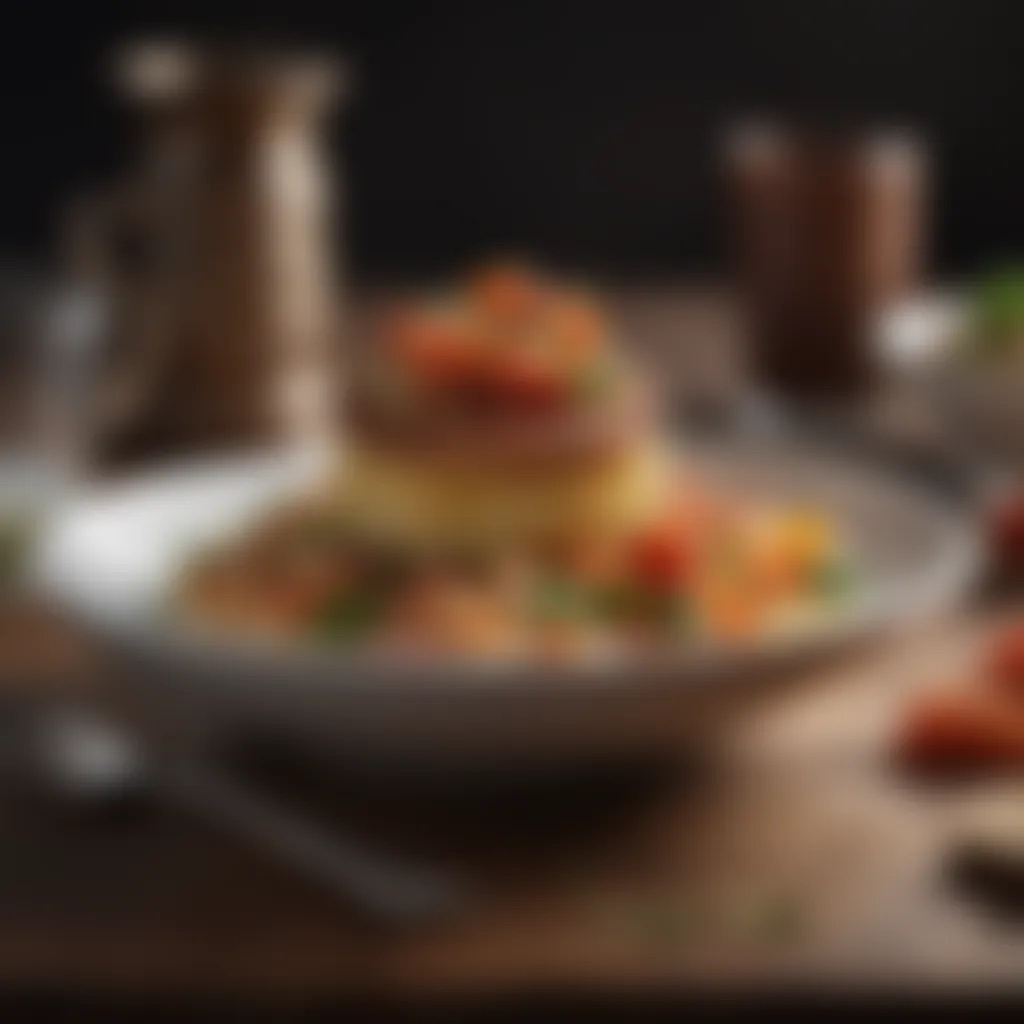
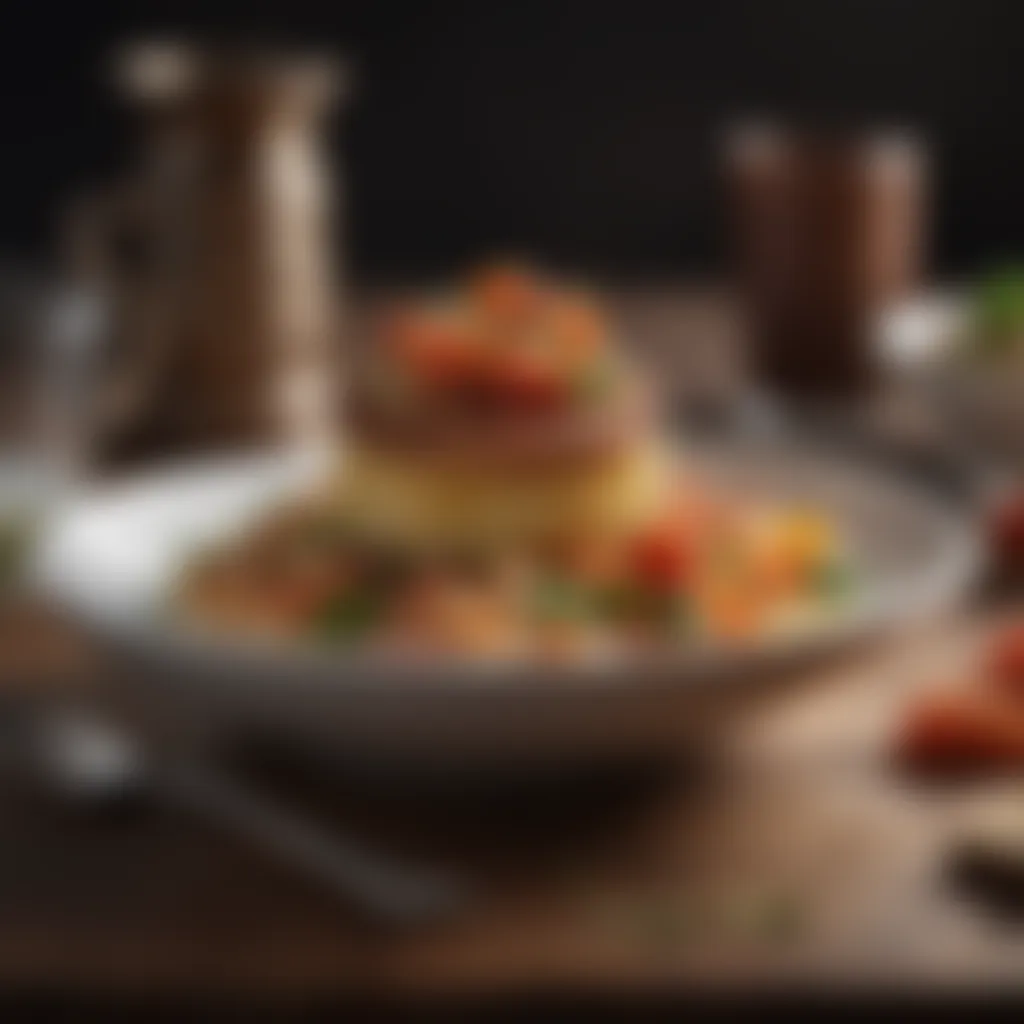
Intro
Creating a recipe presentation in PowerPoint is more than just a simple task; it's an art form that can engage and inspire your audience. Whether you’re aiming to share a cherished family recipe or introduce a new culinary creation, getting the presentation just right can make all the difference. PowerPoint, with its plethora of tools and features, provides an ideal platform for visually appealing and informative presentations. By mastering a few strategic techniques you can not only showcase your culinary skills, but also tell a story that resonates with your audience.
This guide will walk you through essential elements that transform basic recipe presentations into captivating visual experiences. Let's roll up our sleeves, just like when we start cooking, and dive into the core components — starting with the ingredients. Remember, a well-structured presentation begins with clarity in each phase, just like a well-prepared dish.
Ingredients:
The backbone of any recipe presentation is clearly listing the ingredients. Presenting them in a manner that is organized and easy to read is crucial. Here’s a precise format you might find useful:
- 2 cups of all-purpose flour
- 1 cup of granulated sugar
- 1/2 cup of unsalted butter, softened
- 2 large eggs
- 1 teaspoon of vanilla extract
- 1/2 teaspoon of baking powder
- 1/4 teaspoon of salt
When you display measurements clearly, it allows your audience to follow along without confusion. It’s akin to having all your ducks in a row before the cooking journey begins.
Preparation Steps:
After you list your ingredients, it's time to detail the preparation steps. This is where clarity and precision shine:
- Preheat your oven to 350°F (175°C).
- In a mixing bowl, cream together the softened butter and sugar until light and fluffy.
- Add the eggs, one at a time, blending well after each addition.
- Stir in the vanilla extract.
- In a separate bowl, whisk together the flour, baking powder, and salt.
- Gradually add the dry ingredients to the wet mixture, combining until just blended.
Each step here is like a brick in the foundation of your construction project; without one, the entire structure can come crumbling down.
Technical Aspects:
Understanding the technical aspects of your recipe is equally vital. Ensure that your PowerPoint slides include temperature settings, cooking times, and techniques:
- Oven Temperature: 350°F (175°C)
- Baking Time: About 30-35 minutes, or until a toothpick inserted into the center comes out clean.
- Cooling Time: Let it cool in the pan for at least 10 minutes before transferring to a wire rack.
These detailed aspects won't just clarify your process but also offer a reference point for anyone trying to replicate your recipe.
Cooking Process:
Once you've prepared your ingredients and set your technical aspects, the cooking process takes center stage. Here’s how to convey that effectively:
- Pour the batter into a prepared baking pan.
- Place it in the preheated oven, setting a timer.
- Check on it midway through; sometimes ovens can be unpredictable.
- Just before the time is up, take a peek. A light golden color will reveal the perfect bake.
Highlighting key techniques, like avoiding overmixing, ensures that your audience understands what makes or breaks the dish.
Troubleshooting Tips:
Common mistakes can lead to frustration; offering troubleshooting tips can enhance your audience's learning:
- If your cake sinks in the middle, it could be undercooked or the oven temp was too low.
- Should the cake have a rubbery texture, you may have overmixed.
- For a dry cake, consider checking the oven’s actual temperature with a thermometer.
These insights ensure that they’re not left in the dark should something not go according to plan.
“Failing to prepare is preparing to fail.” — John Wooden
Understanding the Purpose of a Recipe Presentation
A recipe presentation goes beyond mere information transfer. It's an art form that combines culinary knowledge with creative communication techniques, making it essential in the culinary world. The aim is not just to tell someone how to replicate a dish but to ignite a passion for cooking and help them feel confident in their own kitchen.
When preparing to craft a recipe presentation, consider it as an opportunity to connect. This involves not only sharing your favorite recipes but also creating a vivid experience that inspires your audience. It provides them a visual and emotional guide, ensuring they understand both the how and the why behind every step of the recipe. By framing your presentation with purpose, you help your audience grasp the full significance of what they are learning.
The Role of Presentations in Culinary Arts
In culinary arts, presentations hold the key to influencing perceptions. When you present a recipe, it is often the first chance to communicate your culinary expertise and personality. A well-designed presentation can transform a simple dish into an experience that resonates emotionally.
- Inspiration and Engagement: Each slide tells a story. Use background colors and images that stimulate interest. Hooks like interesting facts or personal anecdotes make the dish relatable.
- Improved Learning: Presentations help break down complex cooking processes into digestible steps, making it easier for novices to follow along. A thoughtful layout helps to clarify methods as much as ingredients.
- Culinary Identity: As a presenter, the way you express your culinary identity connects you with your audience. It reflects not just what you cook, but how you view food culture, tradition, and creativity.
Ultimately, this dual purpose of educating and engaging elevates both the recipe and the presenter in the eyes of the audience, deepening their appreciation.
Identifying the Target Audience
To craft a successful recipe presentation, understanding your audience is crucial. Tailoring the presentation to meet their specific needs makes the content resonate more. Here’s how to identify who you’re speaking to:
- Demographics: Consider the age, marital status, and cooking experience of your audience. A room full of seasoned chefs will likely require a different approach compared to a group of enthusiastic beginners.
- Interests and Expectations: What do your audience members love about cooking? Are they eager to learn gourmet techniques, or are they more interested in quick meals for busy weeknights? Tailoring your content to these interests keeps them engaged.
- Cultural Context: Understanding cultural backgrounds can inform your presentation style and recipe choices. For instance, if you're working with a predominantly Italian audience, a recipe focusing on homemade pasta may hit the spot.
Be mindful of these considerations, as knowing your audience lays the groundwork for a connection that can turn a simple recipe presentation into a memorable, impactful experience.
Fundamental Design Principles
The backbone of a compelling recipe presentation lies in its design principles. These foundational elements are what convert a set of instructions into an engaging visual narrative. By strategically applying design principles, you not only enhance the effectiveness of your communication but also make your recipe memorable. It’s important to capitalize on these design dynamics, ensuring that the presentation not just conveys information but also creates an aesthetic experience.
Maintaining Visual Consistency
Visual harmony is vital for keeping your audience’s focus where it needs to be: on the content. Discrepancies in style can be distracting and may undermine the integrity of your message.
Color Schemes
Color is not just about aesthetics; it plays a pivotal role in eliciting emotions and response. Choosing a color scheme that resonates with the dish can elevate the viewer's experience. For instance, earthy tones might accentuate a rustic dish while vibrant hues could resonate with fresh, summer recipes. A key characteristic of successful color schemes is their ability to evoke an emotional reaction while keeping everything united. Balanced color palettes can enhance the benefit of audience engagement and brand identity. However, too many competing colors can confuse the viewer, making the recipe less approachable. So, sticking to a limited palette, say three to five colors, generally works well.
Font Selection
Font choice speaks volumes. The typography in your presentation impacts readability and sets the tone for your narrative. Clean, sans-serif fonts like Arial or Helvetica are often favored due to their clarity. A critical feature of font selection is ensuring the typeface aligns with the message of the dish. For a sophisticated recipe, a serif font could add a touch of class, while playful scripts might suit a family-friendly entry. The balance lies in choosing legible fonts that convey the recipe’s essence without overwhelming the viewer. A downside may be that overly ornate fonts can distract from the content itself, losing the audience’s attention.
Layout Balance
A well-balanced layout is more than just symmetry; it's about positioning content in a way that feels intuitive and guides the viewer's eyes. Having a clear hierarchy through spacing and alignment can improve navigation through your slides. The essential characteristic of layout balance is that it provides a structure, allowing each element—text, images, and graphics—to breathe and be appreciated. This careful arrangement can enhance both appeal and comprehension. The potential drawback here is that an unbalanced presentation may create confusion, leading to a disjointed viewer experience.
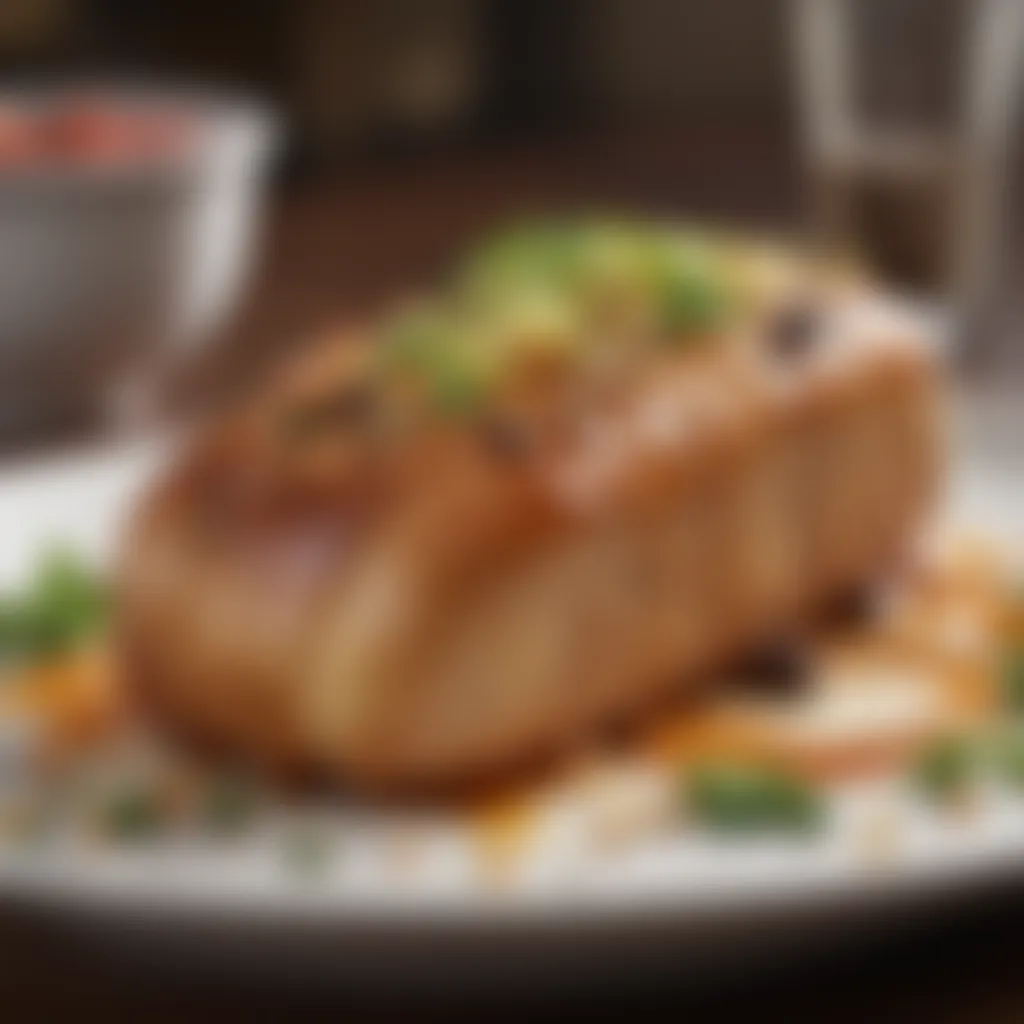
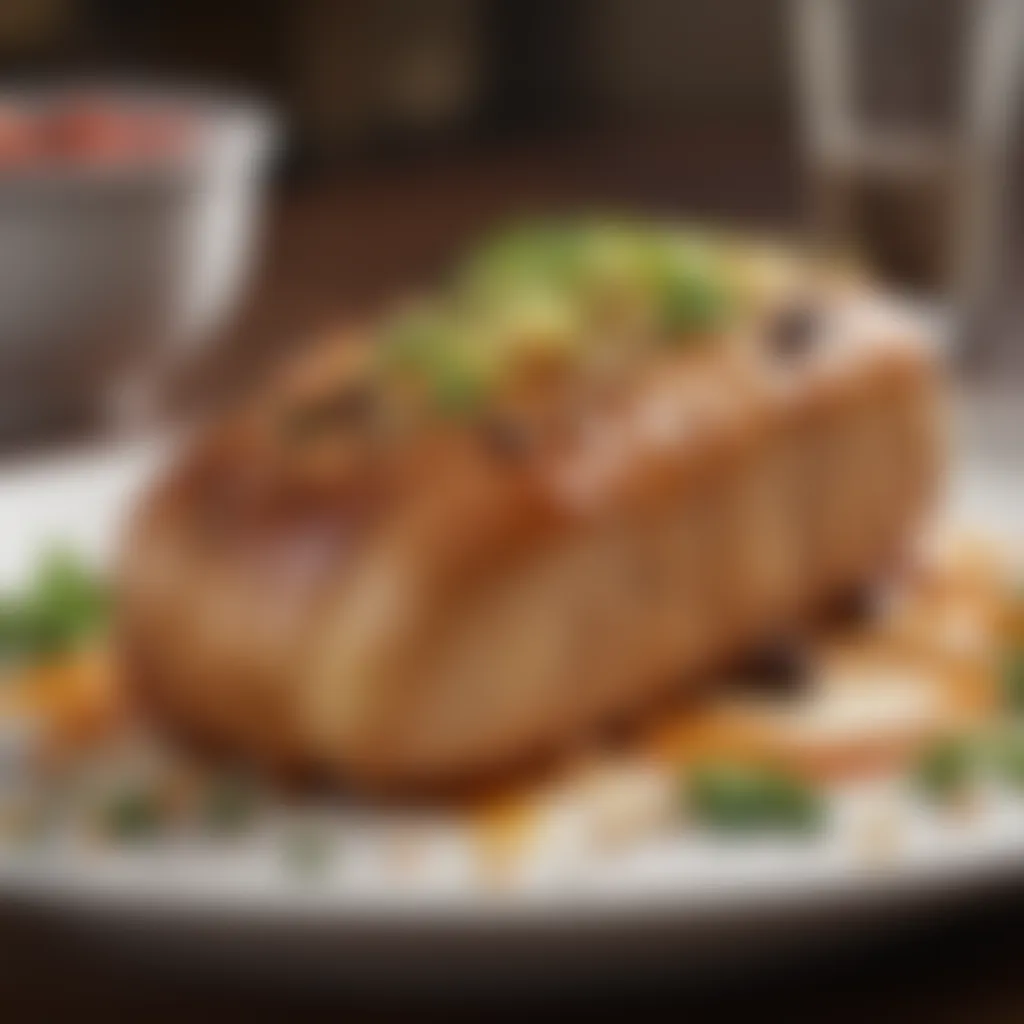
Enhancing Readability
Clarity is critical. A beautifully designed slide will still fall flat if the text is hard to read orscan.
Font Size
The font size you choose can drastically affect how your message is perceived. A size that’s readable from afar should be a priority. Titles may range from 32-40 point size, while body text works best around 24 point. The primary characteristic of font size is its proportionality—larger sizes command attention, while smaller sizes deliver details. This well-considered approach makes the presentation beneficial for diverse audiences, ensuring everyone can access the information with ease. However, an overly large font might limit the space for more content on a single slide, which can feel cramped.
Text Contrast
Good contrast between text and background is essential for readability. High contrast, such as black text on a white background, improves visibility and keeps your audience's eyes from straining. Key to text contrast is choosing complementary colors that not only enhance your slides’ visual appeal but also ensure legibility. This principle aids in capturing attention and retaining it throughout the presentation. While contrast enhances readability, poorly chosen palettes can lead to eye fatigue, making the text challenging to follow.
Bullet Point Usage
Bullet points are great for breaking down complex information into digestible chunks. They offer a straightforward way to list ingredients, steps, or key points without overwhelming the audience. An effective aspect of bullet point usage is the ability to encapsulate ideas succinctly, serving the purpose of summarization. This is especially beneficial when you aim to present a lot of info quickly. However, overusing bullet points can cause information overload and make a presentation feel disjointed, so use them judiciously.
Tip: Balance between text and visual elements ensures clarity while maintaining engagement. Aim for harmony in your slides to invite the audience to truly absorb your recipes.
Crafting the Content
Crafting the content of a recipe presentation is vital. It's where the heart of your message lies, shedding light on not just the ingredients, but also the experience you hope to convey through your dish. If done right, it becomes not merely a list of instructions but a rich tapestry of culinary storytelling. With a keen focus on this part, you can weave together elements that captivate your audience, ensuring that they savor every detail of your recipe.
Structuring the Recipe Information
Ingredients List
When delving into the ingredients list, think of it as the foundation of your recipe. This section should be clear and straightforward. A well-structured list simplifies the cooking process, allowing even novice cooks to follow along with ease. One key characteristic of an effective ingredients list is its clarity. Each item should be presented with precise measurements.
By utilizing bullet points, you enhance readability, making it easier for your audience to gather necessary items without scouring the text. A unique aspect of the ingredients list is the opportunity to include substitutions, responding directly to dietary restrictions. For instance, suggesting gluten-free alternatives for certain flours can be unbelievably beneficial, allowing variety and inclusivity in your presentation.
Preparation Steps
The preparation steps build upon the ingredients. This section is where clarity is essential, transitioning the audience from mere ingredients to the actual cooking process. By laying out the steps systematically, you're guiding your audience through the transformation of raw ingredients into a finished dish.
Key here is a chronological structure. Highlighting each phase—from prep work to the cooking stage—benefits those who might not be familiar with the process. For example, you could break down a complex recipe into simple, digestible parts, making it less daunting. Each step should feel like a gentle push towards the final delicious result, rather than an overwhelming checklist.
Cooking Time and Servings
In any recipe, understanding the cooking time and servings is crucial for effective planning. This part provides the audience with essential logistics, helping them maximize their time in the kitchen. Clearly stating how many servings the recipe yields is an important characteristic—ensuring that home cooks know if they’re preparing a meal for two or ten.
Moreover, specifying cooking times aids in preparation. It can answer a common question: "How long is this going to take?" In your PowerPoint, setting a visual timer or a simple graphic comparing cooking durations could engage your audience further. Careful consideration of these elements resonates well, adding an element of professionalism to your presentation.
Incorporating Descriptive Language
Sensory Descriptions
Sensory descriptions breathe life into your recipe presentation. By employing vivid language to paint a picture of aroma, taste, texture, and visual appeal, you draw your audience into the experience. This part engages them emotionally; a dish is not just about the steps taken, but the delightful experience it promises.
Using metaphors and similes can make a dish come alive. For instance, describing a cake as "light as a cloud, drizzled in luscious chocolate" invites imagery. The unique feature of sensory descriptions is their ability to evoke emotions and memories related to food, making your presentation resonate more deeply with the audience.
Cooking Techniques
Discussing cooking techniques offers insight into not only how to cook but why certain methods are appropriate. Each technique carries its significance that ties into the overall texture and flavor of the dish. This aspect is particularly beneficial; it educates your audience and encourages them to engage more thoughtfully with the process.
For example, when presenting a method, you might highlight a more complex technique like sous-vide, explaining its precision and advantages, or maybe the art of sautéing—emphasizing the transformative power of heat and oil. Including videos or animations in your PowerPoint to illustrate these techniques can be a game-changer, making them more accessible.
Cultural Context
Embedding cultural context into your presentation not only enriches the recipe but helps your audience connect with it on a deeper level. Food doesn't exist in a vacuum; every dish has a story—its roots, traditions, and familial ties. By discussing the cultural background, you're not just presenting a recipe; you're sharing an experience and creating a connection.
Highlighting the cultural significance of the dish encourages appreciation. Given that different audiences may bring various backgrounds, a key characteristic of this approach is inclusivity. This unique feature allows you to share insights from various cuisines, making your presentation diverse and engaging. Incorporating anecdotes or historical references enhances this element, providing a narrative that captivates your audience's attention.
Utilizing Visual Aids
In the world of recipe presentations, visual aids play a pivotal role. They are not just embellishments; they serve to enhance understanding, evoke emotions, and ultimately make a presentation memorable. The engagement level rises when you integrate captivating images and informative charts, as they bridge the gap between the speaker and the audience, allowing for a fuller appreciation of the culinary art being presented.
Importance of High-Quality Images
Photography Skills
Photography is more than just clicking a button; it's about capturing the essence of a dish. Clear, high-resolution images can transport the viewer right to the dining table, almost making them smell the aroma wafting from the plate. Good photography skills are essential because they allow for careful attention to lighting, angles, and composition. When the photo resonates well, the dish's appeal skyrockets. Conversely, poor photos can misrepresent a dish, undermining its perceived value. A unique characteristic of good photography is the use of natural light, which brings out the true colors and textures of food. This technique can make a significant difference, but using artificial lighting can sometimes lead to undesirable shadows and distortions, making it a double-edged sword in presentations.
Image Treatment
Image treatment involves editing and enhancing photos for clarity and vibrancy. High-quality images adjusted for brightness, contrast, and sharpness create a more appealing visual impact. This process is crucial in making dishes look more appetizing and inviting. The key characteristic of image treatment is the ability to enhance flaws without distorting reality. This balance is vital because overly edited images can mislead viewers. A unique feature is the use of filters; while they can elevate overall aesthetics, they can sometimes oversimplify the dish's complexity, leading to unrealistic expectations.
Placement in Slides
Careful placement of images within slides is crucial for effective communication. When images are strategically positioned, they complement the text rather than distract from it. A well-placed image can capture attention at just the right moment, adding depth to the narrative being shared. The key here is balance; too many images or cluttered layouts can overwhelm viewers and dilute the message. A powerful aspect of placement is the ability to create a visual hierarchy, guiding the audience’s eyes where you want them to focus. However, decisions related to placement must consider the overall design, as overly elaborate presentations may lead to confusion rather than clarity.
Incorporating Charts and Graphs
Charts and graphs can transform a standard recipe presentation into a data-driven narrative. They provide insightful context, turning abstract numbers into concrete visual representations.
Nutritional Information
Integrating nutritional information through charts allows audiences to make informed decisions about their diets. This demonstrates care for the viewer’s well-being, showcasing benefits such as low-calorie counts and high nutrient density. The key characteristic here is accessibility; presenting data visually breaks down complex information. A unique feature is the ability to create comparative charts, highlighting the healthier options among various dishes, but overly technical charts can alienate an audience that may not be familiar with such data.
Cost Analysis
Cost analysis through graphs can illustrate the economic value of a dish, helping viewers see not just the taste, but also the financial feasibility of preparing the meal. This demonstrates practicality and creativity in utilizing ingredients efficiently. The key aspect of cost analysis charts is clarity, allowing audiences to understand what they are investing in. Moreover, a unique feature here can be the use of pie charts or bar graphs that visually split the cost of ingredients versus the final dish, though it's important to note that too much data might render the analysis confusing.
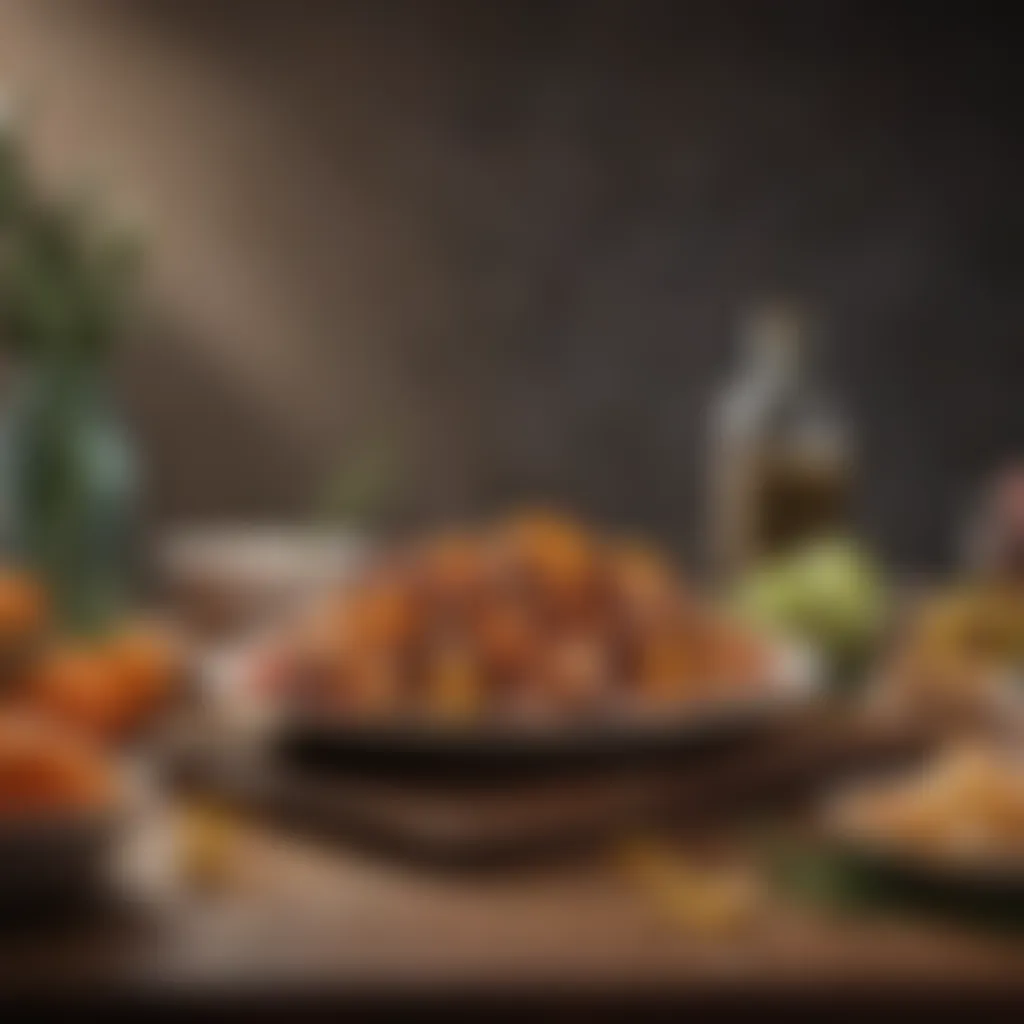
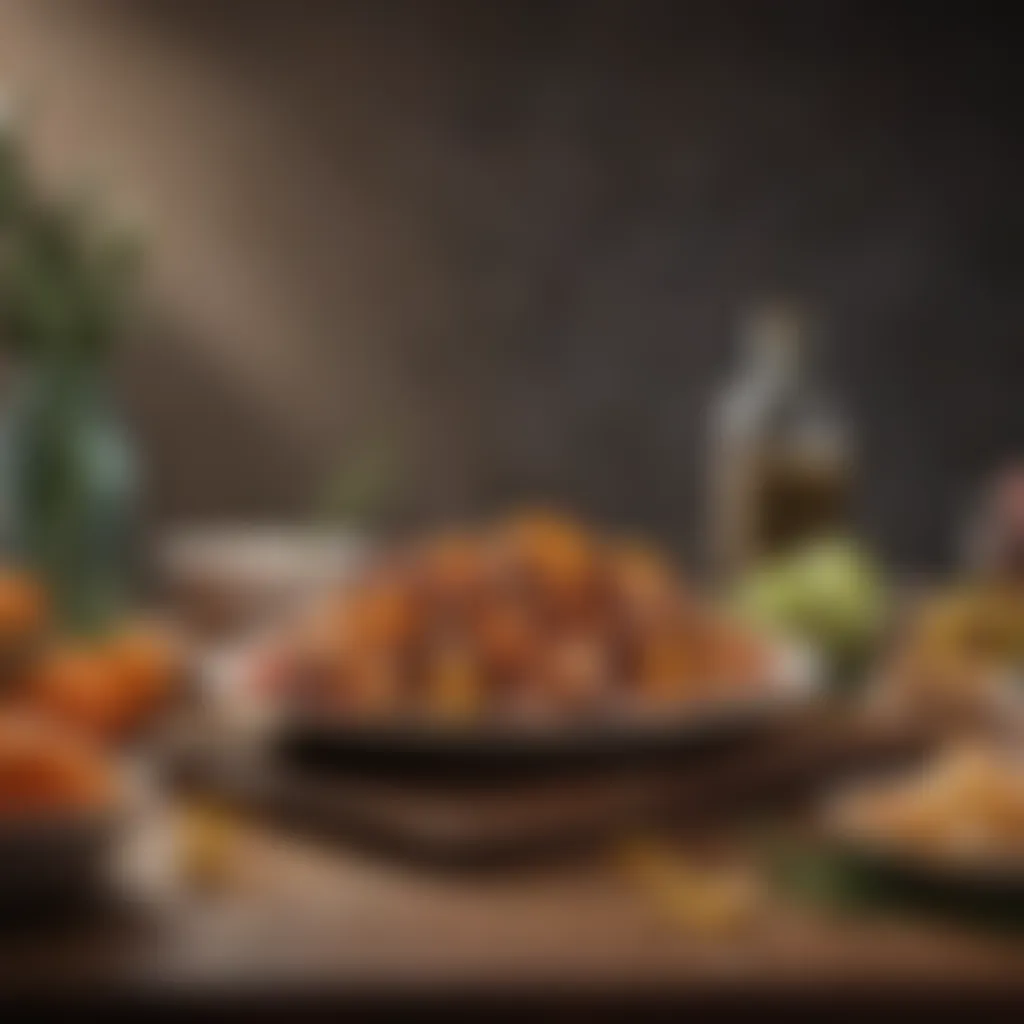
Preparation Time Comparisons
The effectiveness of preparation time comparisons lies in storytelling—concisely presenting how long each dish takes versus the others can aid in meal planning. This can be particularly beneficial for busy individuals looking to maximize their time in the kitchen. The aspect of preparation time comparisons is that it fosters thoughtful decision-making. Using simple bar graphs can clearly show the time commitment for each recipe, making it easier for viewers to comprehend. However, audiences might feel hurried if excessive emphasis is placed on the time metrics, instead of the joy of the cooking process itself.
"Visual aids are not just for decoration; they are central to making the presentation engaging and informative."
Using visual aids effectively can make all the difference in recipe presentations. Focusing on high-quality images, thoughtfully treated visuals, and compelling charts cultivates a richer connection between you and your audience. In combining these elements, you'll elevate both the perception of your culinary creations and the experience for those appreciating your work.
The Art of Storytelling in Presentations
In the realm of recipe presentations, storytelling becomes a powerful ally in capturing attention and connecting with the audience. The essence of a captivating presentation lies not only in the ingredients or the method of preparation but also in the narrative that weaves them together. Effectively utilizing storytelling can make your presentation a journey rather than a mere list of culinary steps. It allows the audience to engage on a personal level, transforming mere viewers into eager participants. By constructing a compelling narrative, you can elevate a simple recipe into an unforgettable experience.
Building a Narrative Arc
Prelude
The introduction sets the stage for your presentation, serving as both a hook and a roadmap. Its contribution to engaging the audience cannot be understated. A strong intro generates anticipation and prompts questions that your presentation will answer. Key characteristics of a solid introduction include relatability and clarity. You want your audience to hear something familiar yet exciting, giving them a reason to lean in. Integrating personal insights or a brief backstory related to the recipe can be tremendously impactful. The unique advantage of a well-crafted introduction lies in its ability to establish a connection; however, it must be carefully balanced to avoid losing focus on the main content.
Conflict
Conflict introduces the challenges faced in the culinary journey. It provides dramatic tension by showcasing potential hurdles, which is relatable for anyone who cooks. Understanding this aspect is crucial, as conflict enriches the narrative. Your audience may resonate with common struggles such as ingredient substitutions or time constraints. The key characteristic of conflict is its relatability—it creates a bridge between you and your viewers. Highlighting your own experiences with these challenges adds authenticity to your story. The advantage here is that conflict keeps attendees engaged; however, if not handled properly, it could overshadow the recipe’s core message and overcomplicate your presentation.
Resolution
Resolution is where the magic happens. It’s the moment your audience sees the culmination of the narrative arc and understands how to overcome the conflicts presented earlier. The contribution of resolution is significant; it provides closure and satisfaction. A good resolution not only showcases the final dish but also reinforces the lessons learned throughout the cooking process. Its key characteristic is clarity—ensuring that your audience leaves with a comprehensive understanding of the recipe. This part of your story can reflect on the joy of sharing a meal or inviting others to join in the cooking experience. The unique feature of a powerful resolution is its ability to elicit a sense of accomplishment in your viewers, but over-expanding on the ending might bore the audience if not concise.
Engaging the Audience Emotionally
To truly captivate your audience, you need to reach out to their emotions. Engaging them on a deeper level makes the experience memorable. This is where the use of personal anecdotes, cultural significance, and imagery comes into play.
Personal Anecdotes
Sharing personal anecdotes brings a human touch to your presentation. This aspect allows you to connect through shared experiences, making your story more relatable. The key characteristic of personal anecdotes is authenticity, as it opens a window into your culinary world and offers insights into your identity as a cook. This choice can be beneficial; it breaks the ice and creates rapport. Unique to this kind of storytelling is its power to evoke feelings—whether joy, nostalgia, or even humor. However, be cautious: over-sharing could lead to tangents that distract from your main focus.
Cultural Significance
Discussing cultural aspects tied to your recipe lends depth to your presentation. It highlights traditions and respects the heritage behind food preparation. The contribution of cultural significance reinforces why a recipe matters beyond just taste, acting as a bridge connecting diverse backgrounds. The key characteristic of this narrative element is its educational value, as it informs the audience about the customs and stories surrounding the dish. Recognizing these elements enriches the presentation, although it requires careful consideration to avoid cultural appropriation.
Imagery Usage
Imagery plays a crucial role in your storytelling. It’s not just about the photographs on the slides; it’s about painting a picture with your words and visual aids. The contribution of imagery usage is multi-layered. Effective use of visuals can evoke emotions and deepen understanding. A fantastic image or well-chosen metaphor enhances the audience's ability to imagine the recipe’s flavors and textures. Key characteristics of using imagery include clarity and relevance—every image shown should lend itself to the story being told. The unique feature of this tactic is its ability to stir the imagination of the audience, but if the imagery is too vague or fills up the slide without being specific, it can confuse rather than clarify.
Incorporating these elements of storytelling into your presentations will foster a richer experience for your audience. By crafting a captivating narrative, you not only present a recipe but also share a piece of yourself, forging a connection that resonates well beyond the kitchen.
Technical Aspects of PowerPoint
Crafting a compelling recipe presentation in PowerPoint doesn't simply hinge on creativity and visual appeal; it heavily leans on the technical side as well. Understanding how to navigate the various features of PowerPoint can greatly enhance your presentation's effectiveness. This section digs into vital tools and multimedia incorporation that can make or break your culinary showcase.
Navigating PowerPoint Features
Slide Master
Slide Master serves as a backbone for maintaining a consistent design across your presentation. It acts as a template, allowing you to set the font, colors, backgrounds, and other elements that carry through every slide. One of its key characteristics is the ability to change the design centrally, meaning if you decide to switch the font halfway through, you can do that in one place instead of editing each slide individually. This feature significantly saves time and ensures a polished look.
However, not everyone takes advantage of Slide Master; many overlook its potential, sticking to disorganized slides that feature varying styles and formats. So for those aiming for professionalism, mastering the Slide Master is no minor task, but it's an essential one. One downside to using it is that if not set up correctly from the start, it can lead to confusion or unintentional design errors.
Transitions
Transitions are the smooth animations between slides that can either distract or enhance your audience's experience. They serve to guide viewers from one part of your presentation to another, keeping attention focused. PowerPoint offers a wide range of transition options from subtle fades to more dynamic effects, which allows for personalization based on your presentation's theme.
Ultimately, finding the right transition is about balancing flair with functionality. A simple fade effect can maintain a professional tone, while a more animated option may suit a casual recipe demo. Using too many flashy transitions, however, can feel jarring and distract from your message. It’s critical to choose wisely!
Animations
Animations allow you to bring elements on and off the screen, adding yet another layer of visual engagement. They can be particularly useful for emphasizing key points in your recipe, such as highlighting a unique ingredient or demonstrating a step in the cooking process. The characteristic advantage of animations is that they draw the viewer’s attention where you want it, making information digestible.
Still, overusing animations may confuse the audience or cause a chaotic feel. Therefore, it's best to use them sparingly and deliberately. For instance, revealing the ingredients sequentially can build suspense, but flashing text or images erratically can undermine your cooking narrative.
Embedding Multimedia Elements
Videos
Including videos in your presentation can be a game changer. A well-placed video can provide clarity that words alone cannot. For cooking presentations, showing a quick demonstration of a complex technique can yield immediate understanding. The key characteristic of videos is their ability to bring life to your slides. They are particularly beneficial for showing the cooking process; when a viewer sees how to chop an onion properly, it can be more effective than merely describing it.
However, keep in mind that videos require coordination—ensure they’re loaded correctly and play smoothly within the presentation. Also, consider file size, since large videos could result in lag during your presentation.
Audio Clips
Audio clips can add dimension to your presentation, making it more immersive. Consider using background music or voice narration to set the mood or provide further insights into your recipe information. A great aspect of audio clips is they can create an inviting environment, enhancing the viewer's overall experience. If you’re speaking in a soft tone, a gentle background tune could evoke warmth, showing your passion for cooking.
The downside? Overdoing it can lead to sensory overload, so use audio judiciously. The balance is absolutely vital; while music can enhance, too much can drown out the message.
Interactive Links
Integrating interactive links allows the audience to engage more deeply with the content. Perhaps you want to share a recipe blog or a video link demonstrating a special technique; hyperlinks enable viewers to explore further. This element keeps your audience engaged even after the presentation ends, as they have avenues to follow up on their interests.
However, an overabundance of links can make a presentation feel cluttered. Ensure that each link is relevant and enhances the presentation’s objective. Ideally, you want the audience to follow relevant links without feeling lost or overwhelmed.
When you understand the technical aspects of PowerPoint, you empower yourself to deliver a recipe presentation that is not just informative but also engaging. With tools like Slide Master, animations, and multimedia, you can craft a comprehensive experience that resonates with your audience.

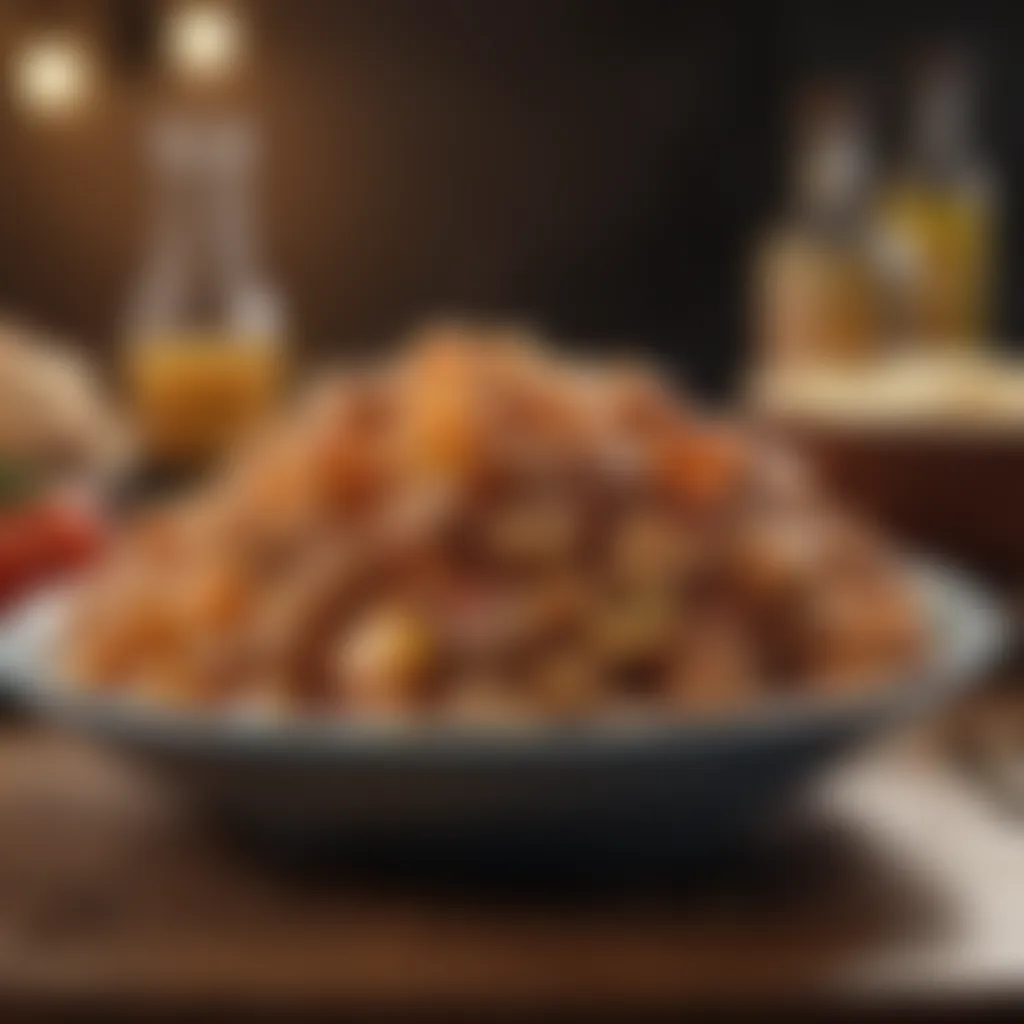
Rehearsing and Delivering the Presentation
Rehearsing and delivering a presentation is a crucial aspect of ensuring that your recipe presentation resonates with the audience. Quite frankly, no amount of beautiful slides or delicious recipe can save a presentation if the delivery falls flat. This section aims to unpack how effective rehearsal and confident delivery can make the difference between a good presentation and a truly memorable one.
Practicing Delivery Techniques
Practicing is where all the magic happens. Delivery techniques—like pacing, voice modulation, and body language—are the tools that can elevate your presentation from ordinary to extraordinary.
Pacing
Pacing refers to how fast or slow you deliver your words. It plays a significant role in maintaining audience engagement. A good pace keeps the audience interested without overwhelming them. If you talk too fast, details may get lost; if too slow, the audience might start to drift off.
One of the key characteristics of effective pacing is the use of pauses. Pausing after making a point gives the audience time to absorb the information. This technique is beneficial because it adds emphasis to important statements, allowing them to resonate more deeply.
A unique feature of good pacing is that it allows for natural breathing spaces in the presentation. Pacing too rapidly can lead to out-of-breath sentences, making you seem nervous. Thus, the advantage is clear: effective pacing not only helps clarity but also positions you as a confident speaker.
Voice Modulation
Voice modulation is about changing your pitch and tone to suit the message you’re conveying. It adds color to your presentation. Imagine sharing a compelling recipe and maintaining the same tone throughout—how drab that would be!
The key characteristic here is variation. By varying your voice, you underline key points and signal transitions. It’s much easier to keep the audience's attention when your voice has dynamics.
The unique aspect of voice modulation is that it can convey emotion. If that recipe comes from a cherished family tradition, a slight quiver in your voice can suggest depth and meaning. However, if you overdo it with excessive highs and lows, it can come off as theatrical and insincere.
Body Language
Body language encompasses the non-verbal cues you showcase during your presentation, from gestures to facial expressions. It can significantly enhance your message. A simple smile can foster connection, while an open posture can convey confidence.
One key feature of effective body language is alignment with your words. If you say "This dish is a delight" with a frown, it sends mixed signals to your audience. Therefore, consistent body language reinforces your message.
However, this can be a double-edged sword. Nervous habits like pacing back and forth can distract your audience. Yet, deliberate gestures can reinforce key points and keep the audience engaged. The wrestling between confidence and nervousness speaks to the importance of practice.
Gathering Feedback and Refining
Gathering feedback is essential to refining your presentation. It’s the step that allows you to improve and meet your audience’s expectations.
Constructive Criticism
Constructive criticism is necessary for growth. Unlike destructive feedback, constructive criticism focuses on areas of improvement while also highlighting strengths. Its key characteristic is specificity.
By targeting specific aspects of your presentation, it serves as a guide for necessary adjustments. For instance, if a peer mentions that your slides were hard to read due to font size, you can address that directly rather than feeling overwhelmed by vague discomfort.
One of the unique advantages of constructive criticism lies in fostering a growth mindset. Learning from feedback equips you with the skills to refine both this and future presentations.
Iterative Improvements
Iterative improvements are part of a continuous cycle of progress. Each time you present, you should gather feedback, make changes, and practice anew. This iterative approach allows for refinement in both content and delivery.
A principal characteristic of iterative improvements is the focus on gradual enhancement. Each iteration builds upon, rather than starting from scratch, creating a compounding effect of growth. It often yields better results over time, as small tweaks can have a large impact.
However, one potential downside to this method is losing focus on your original intent. It’s essential to keep your core message intact amid constant adjustments, balancing quality with fidelity to the original recipe or presentation intent.
Peer Review Strategies
Peer review strategies involve engaging others in assessing your presentation. This method can include informal conversations or structured evaluation forms. One characteristic of effective peer review is diversity in feedback; different perspectives can reveal aspects you may overlook.
Using varying feedback sources benefits you by exposing blind spots—things you didn’t even realize might need attention. For instance, if multiple peers suggest a particular slide is too crowded, chances are you should take note.
A unique feature of peer reviews is that they encourage collaboration. Engaging with peers fosters a supportive environment where sharing concerns are normalized. This communal approach can yield richer insights compared to solitary rehearsals.
Giving and receiving feedback also has its challenges. It’s vital to approach feedback with an open mind and to deliver it in a way that promotes improvement rather than discouragement. It’s a balance, and like many things in cooking, practice makes perfect!
Key Takeaway: Rehearsing and delivering your recipe presentation successfully hinges on practiced delivery techniques and informed feedback that enables refinement. The beauty is in the combination of all these elements coming together.
Finalizing Your Recipe Presentation
In any recipe presentation, reaching the final stages is where all the hard work and preparation culminates. It’s not just about putting together slides; it’s about ensuring that each element aligns to create a compelling message. Finalizing your recipe presentation ensures clarity, cohesion, and preparation for audience interaction. This not only enhances the audience’s understanding but also your confidence as a presenter.
Checking for Clarity and Cohesion
Logical Flow
When discussing Logical Flow, we refer to the smooth progression of ideas throughout the presentation. This aspect is important because it guides the audience step-by-step through your recipe narrative, allowing them to absorb information without feeling lost. A well-structured logical flow makes your content relatable and digestible.
- Key Characteristic: A clear connection between slides and segments fosters a natural transition of thoughts.
- Beneficial Choice: A strong logical flow minimizes confusion, making it easier for the audience to follow along—a crucial element when you are sharing culinary tips.
- Unique Feature: This element also allows for easy adjustments. For instance, if a particular segment is too long, a logical flow helps you identify what can be trimmed or emphasized without disrupting the overall presentation.
- Advantages: By maintaining logical flow, your message remains coherent, enhancing retention for your audience.
Technical Corrections
In terms of Technical Corrections, this aspect ensures that your presentation is free from errors that could detract from your message. Technical glitches can happen to anyone, but addressing them beforehand is essential to project professionalism.
- Key Characteristic: This includes checking spellings, alignment issues, or broken links. These minor details often make a big difference.
- Popular Choice: It’s a good practice to review technical elements because they reflect your attention to detail. A well-crafted script is invisible, whereas a poorly executed one is glaring.
- Unique Feature: Technical corrections can be tedious, however, they significantly boost your overall presentation quality.
- Advantages: Addressing these aspects before presenting can greatly enhance audience perception, ensuring that the focus remains on your content and not on avoidable mistakes.
Preparing for Q&A
After delivering your presentation, being prepared for questions can either make or break the experience. It opens the door for further engagement and helps clarify any uncertainties.
Anticipating Questions
Anticipating Questions means foreseeing areas where your audience may seek clarification or further information. This is critical in any recipe presentation, as it fosters rewarding discussions.
- Key Characteristic: This involves thinking critically about the content presented and predicting potential queries the audience may raise.
- Beneficial Choice: By anticipating questions, you’re essentially preparing to be the expert in the room, which builds trust with your audience.
- Unique Feature: It forces you to delve deeper into your material and improves your own understanding of the topic.
- Advantages: This approach also enhances your readiness and confidence during the Q&A, as you're well-prepared to handle unexpected inquiries.
Strategies for Engaging with the Audience
When it comes to Strategies for Engaging with the Audience, this refers to the methods you employ to foster interaction and dialogue during the Q&A or throughout the presentation.
- Key Characteristic: Engaging techniques can include inviting questions, incorporating audience feedback, or even interactive polls.
- Beneficial Choice: Using these strategies can make the presentation feel less like a lecture and more like a conversation, which inspires greater interest.
- Unique Feature: Such methods allow for flexibility; you can adapt your presentation flow based on real-time audience reactions, enhancing collective experience.
- Advantages: Ultimately, that engagement facilitates a richer dialogue around your culinary creations, making it memorable for everyone involved.







